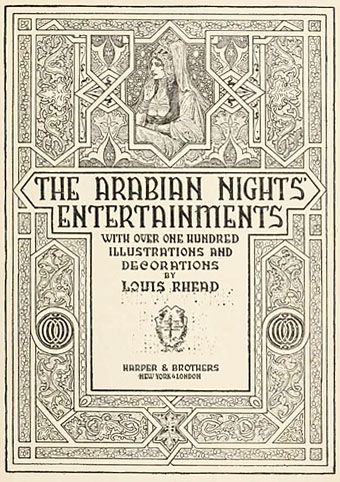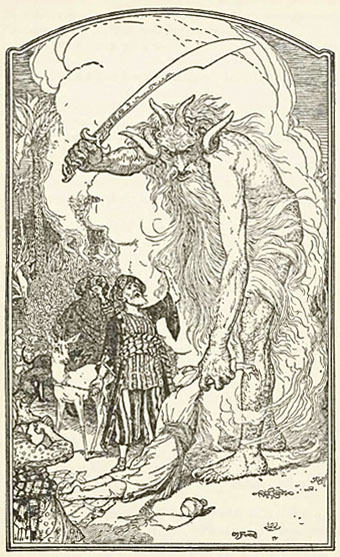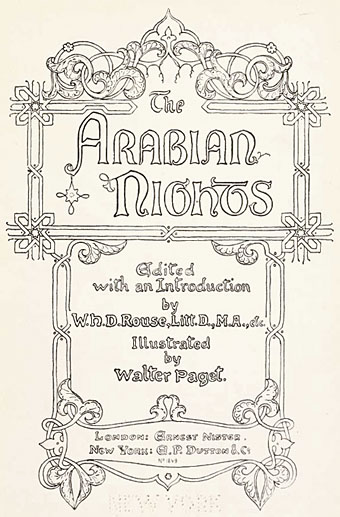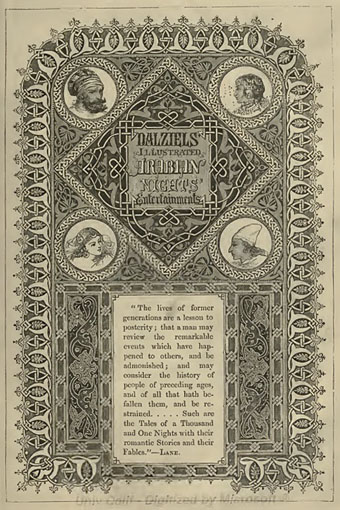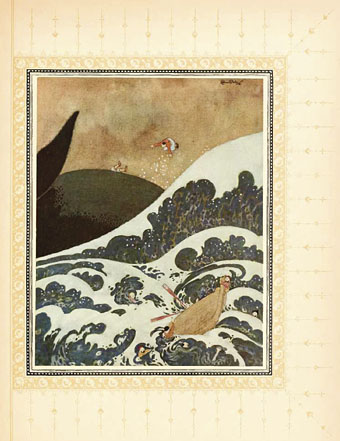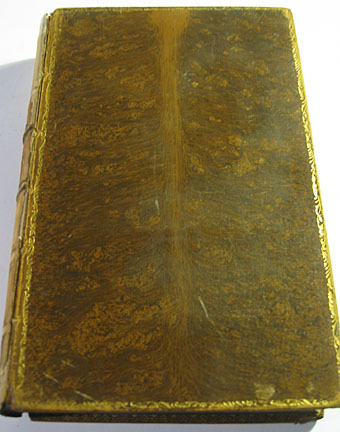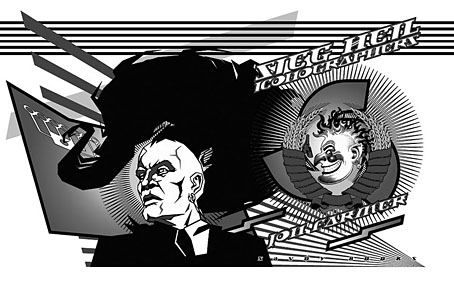Louis Rhead (1916).
Continuing from the weekend’s book discovery, a browse at the Internet Archive reveals many scanned editions of the Arabian Nights. No surprise given the enduring popularity of the stories, and no surprise either that the texts are of variable quality, most of them diluted from the earthy and inventive originals to the status of the mildest fairy tales. The exotic settings make for some fine illustrations, however, a selection of which follow. Edmund Dulac’s edition of Sindbad the Sailor is a typically masterful adaptation by one of the great illustrators.
HJ Ford (1898).
Walter Paget (1907?).
The Brothers Dalziel (1865).
Edmund Dulac (1914).
Elsewhere on { feuilleton }
• The illustrators archive
• The etching and engraving archive
Previously on { feuilleton }
• Edward William Lane’s Arabian Nights Entertainments

